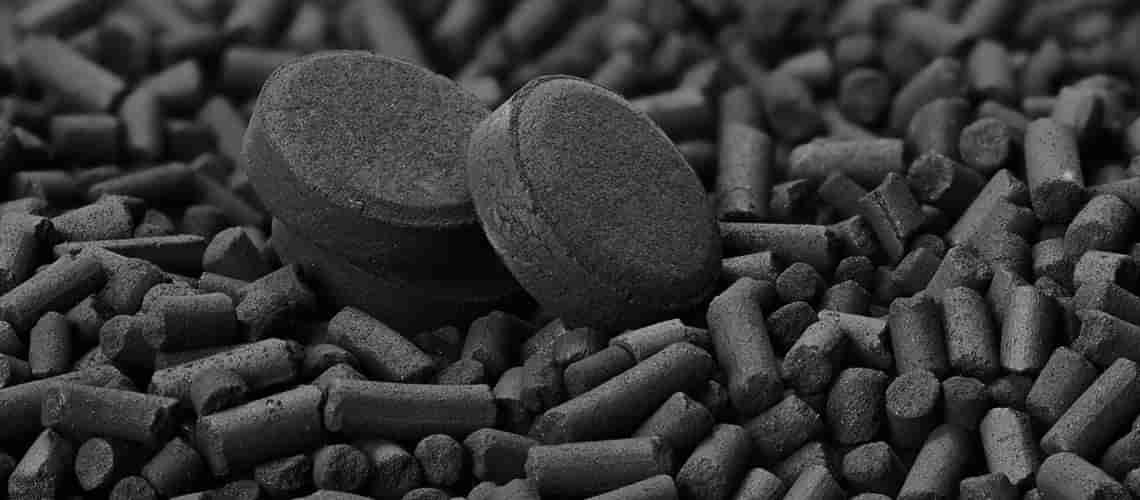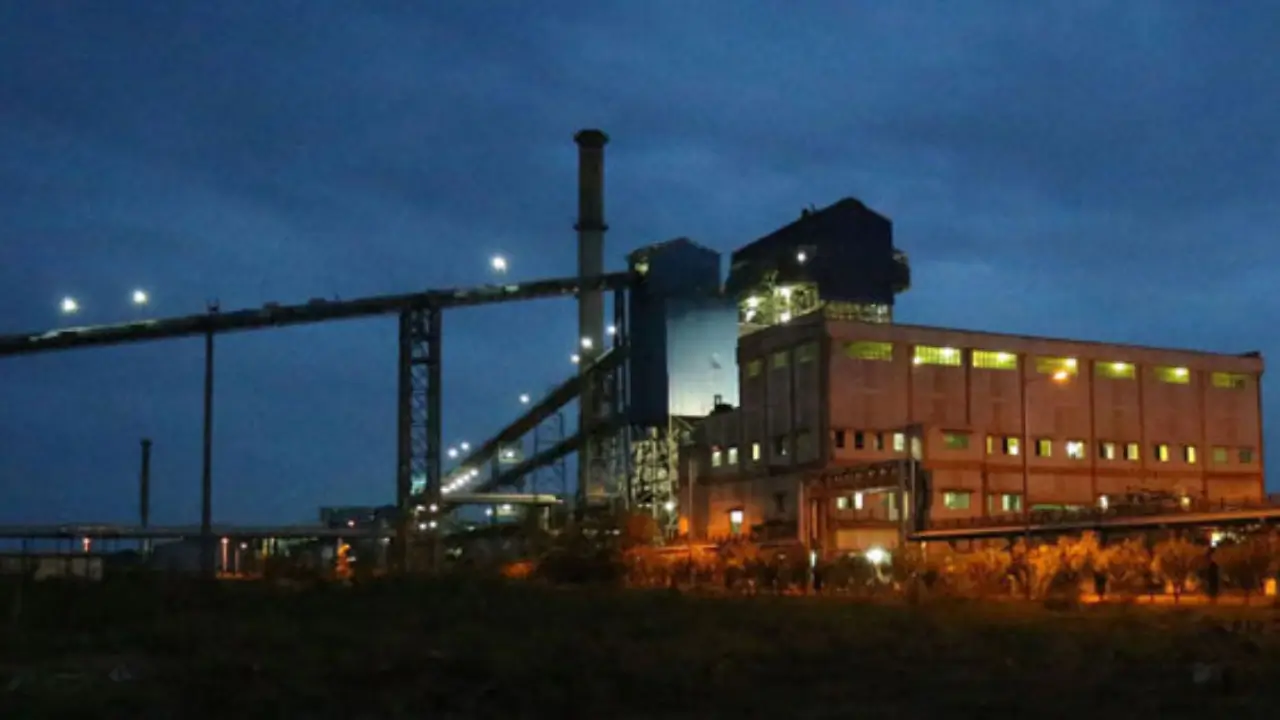- About
- Industries
- Products
- Wastewater Treatment
- Conventional Effluent Treatment: AQUASEP
- Toxic Refractory < 60,000 COD Removal: Catalytic Hydro-oxidation CHD-Ox
- Wet Air Oxidation for TOXIC > 60,000 COD : THERMOX
- Nanobubbles in Water Treatment: NANOPOREX-E
- Chemical-Free Cooling Tower Technology – A Sustainable Solution: ZEPHYR
- MVR for ZLD: Vapozem
- Membranes in wastewater Treatment: PROMEM
- TSS removal and Product recovery using Ceramics: PORESEP
- Heavy Metals and Trace Contaminant removal using Resins: SORBION
- Improving Efficiency of your sand bed filters: NANOMATRIX
- Choosing the Right technology for Wastewater treatment: Wastewater Treatability Studies’
- Reduce/Recover Oil from Wastewater: DISORB
- Produced Water Treatment: PWT
- Non Biofouling Membranes in wastewater Treatment: PROMEM-B
- Advanced Bioaugmentation Culture: BIOPORE
- Cavitation using Ultrasonics: RUSONICS-E
- Oxygen Generator System for Industries: OXYLIFE
- Process Solutions
- Precious Metal catalyst Filtration: CONTUFILT-M
- Activated Carbon Filtration: CONTUFILT-AC
- Raney Nickel Catalyst Filtration: CONTUFILT-RN
- Hot Gas Filtration: CONTUFILT – MH
- Biosolids removal using ceramics: PORESEP
- MVR for ZLD: VAPOZEM
- Ion Exchange-based RESINS: SORBION
- Dehydrating solvents by Zeolite Membranes: SOLVOSEP
- HiGee Continuous Distillation: ROTASEP
- Molecular Separation by Membranes: PROMEM
- Filtration & Separation
- Precious Metal catalyst Filtration: CONTUFILT – M
- Activated Carbon Filtration: CONTUFILT-AC
- Raney Nickel Catalyst Filtration: CONTUFILT-RN
- Hot Gas Filtration: CONTUFILT – MH
- Ceramic Dynamic Membrane Filtration: PORESEP
- MVR for ZLD: Vapozem
- Nano-Bubbles Improve Process Efficiency: NANOPOREX
- Alternate to Continuous Distillation / Rectification: ROTASEP
- Liquid-Liquid Extraction Mixer Settler: SEPARIX
- Ion Exchange-based RESINS: SORBION
- Pervaporation: Dehydrating Solvents and Separating Mixtures: SOLVOSEP
- Cartridges & Filter Bags: FLOWSEP™
- Molecular Separation by Membranes: Recovery and Isolation: PROMEM
- Colour / Organics / VOC Removal: CARBOSORB
- Oxygen Generator System for Industries: OXYLIFE
- RUSONIC – Sonochemistry
- Magnetic Separator Technology: MAG-Filt
- Wastewater Treatment
- Resource
- Contact Us
Top Posts
5 Applications of Nanobubbles in Agriculture
How to Increase Yield Without Using Fertilisers?
Anaerobic treatment of wastewater is a sustainable approach that minimizes environmental impact while efficiently reducing organic pollutants. The Diva UASB (Upflow Anaerobic Sludge Blanket) reactor is a cutting-edge technology designed to treat high-strength wastewater. This system utilizes anaerobic microorganisms to convert organic matter into biogas, which can be harnessed as renewable energy.
By employing the Diva UASB reactor, facilities can achieve significant reductions in biochemical oxygen demand (BOD) and total suspended solids (TSS), promoting a circular economy.
Understanding Anaerobic Treatment
Understanding anaerobic treatment involves recognizing its role in effectively managing wastewater while promoting sustainability. This process employs anaerobic microorganisms to break down organic matter in the absence of oxygen, resulting in the production of biogas, primarily composed of methane and carbon dioxide.
Anaerobic treatment is particularly advantageous for high-strength wastewater, as it significantly reduces biochemical oxygen demand (BOD) and total suspended solids (TSS) while generating renewable energy.
The Diva UASB reactor exemplifies this technology, providing a compact and efficient solution for wastewater treatment. The reactor operates by allowing wastewater to flow upward through a blanket of anaerobic sludge, where microorganisms metabolize organic pollutants.
This process not only decreases the volume of sludge produced but also captures valuable biogas for energy use. By integrating anaerobic treatment into wastewater management practices, industries can enhance resource recovery, lower operational costs, and minimize environmental impacts, contributing to a more sustainable future.
Diva UASB Reactor - Overview
The Diva UASB (Upflow Anaerobic Sludge Blanket) reactor is designed to optimize the anaerobic treatment of wastewater with several salient features.
Its unique upflow design promotes efficient contact between wastewater and anaerobic microorganisms, enhancing the breakdown of organic matter. The reactor operates at low hydraulic retention times, making it suitable for treating high-strength wastewater while minimizing the footprint.
Equipped with a well-structured sludge blanket, the UASB reactor facilitates the retention of active biomass, resulting in effective pollutant removal and reduced sludge production. The generation of biogas, primarily methane, serves as a renewable energy source, contributing to overall energy efficiency.
Additionally, the Diva UASB reactor is designed to operate under various temperature conditions, allowing for adaptability across different industrial applications. With its robust performance and environmental benefits, the Diva UASB reactor is an ideal solution for sustainable wastewater management.
Mechanism of Diva UASB Reactor
The anaerobic treatment process in a Diva UASB reactor involves several stages of biochemical reactions, primarily characterized by the conversion of organic matter into biogas.
This process can be divided into three key stages: hydrolysis, acidogenesis, and methanogenesis. Each stage is facilitated by distinct groups of microorganisms and plays a crucial role in the overall conversion of organic substrates.
Hydrolysis
In the initial stage, complex organic matter, such as carbohydrates, proteins, and lipids, is broken down into simpler soluble compounds by hydrolytic bacteria.
Enzymes produced by these bacteria catalyze the hydrolysis reactions, converting polymers into monomers like sugars, amino acids, and fatty acids. This step is essential as it makes the organic matter more accessible for subsequent microbial processes.
Acidogenesis
The soluble products generated during hydrolysis are further fermented by acidogenic bacteria in the acidogenesis stage. These microorganisms convert the simple compounds into volatile fatty acids (VFAs), alcohols, hydrogen, and carbon dioxide.
This fermentation process leads to the accumulation of VFAs, which serve as the primary substrates for methanogenic bacteria in the next stage. Acidogenesis is a crucial step as it regulates the pH and the balance of nutrients available for methanogenesis.
Methanogenesis
In the final stage, methanogenic archaea convert the products of acidogenesis, particularly VFAs and hydrogen, into methane and carbon dioxide. This process occurs under strictly anaerobic conditions and is highly sensitive to changes in environmental factors such as pH, temperature, and substrate concentration.
Methanogenesis can take place via two primary pathways: acetate fermentation, where acetate is directly converted to methane, and hydrogenotrophic methanogenesis, where hydrogen gas is utilized to reduce carbon dioxide into methane.
Overall, the anaerobic treatment process in the Diva UASB reactor efficiently converts organic pollutants into biogas, predominantly methane, which can be harnessed as renewable energy. The synergy between hydrolytic, acidogenic, and methanogenic microorganisms is crucial for optimizing the efficiency and stability of the anaerobic treatment process.
Applications
Anaerobic digestion (AD) is an increasingly viable technology for treating organic waste and generating renewable energy. Its applications span various sectors, each offering distinct advantages.
Agricultural Waste Management
In agricultural waste management, anaerobic digestion effectively handles livestock manure, crop residues, and food waste. By converting these materials into biogas, farmers can reduce odors and greenhouse gas emissions while generating renewable energy for on-site use or sale.
Wastewater Treatment
In wastewater treatment, municipal and industrial facilities benefit from anaerobic digestion, which reduces sludge volume and enhances treatment efficiency. This leads to lower disposal costs and the recovery of biogas for energy production.
Food and Beverage Industry
The food and beverage industry generates significant organic waste that can be efficiently treated through anaerobic digestion. This process not only reduces waste disposal costs but also enables facilities to utilize biogas for heating or electricity, enhancing sustainability.
Alternative to Landfilling Organic Waste
Anaerobic digestion offers an alternative to landfilling organic waste, helping to divert materials and reduce methane emissions from decomposing waste. It is also critical for bioenergy generation, as the biogas produced can be converted into electricity, heat, or upgraded to biomethane for use in natural gas grids or as vehicle fuel.
Contribution to Circular Economy
Key reasons to choose anaerobic digestion include sustainability, cost savings, and environmental benefits. AD contributes to the circular economy by recycling organic waste and reducing reliance on fossil fuels, generating renewable energy and nutrient-rich digestate for fertilizer.
By reducing waste disposal costs and generating energy, anaerobic digestion lowers operational expenses for businesses and municipalities. It significantly decreases greenhouse gas emissions compared to traditional waste disposal methods, mitigates odors, minimizes water pollution, and promotes soil health.
Anaerobic digestion offers a versatile solution for managing organic waste while producing renewable energy, enhancing sustainability, reducing costs, and mitigating environmental impacts.
FAQs
What is anaerobic digestion?
Anaerobic digestion is a biological process in which microorganisms break down organic materials, such as food waste or manure, in the absence of oxygen, producing biogas and digestate as end products.
What are the benefits of anaerobic digestion?
Anaerobic digestion helps reduce waste volume, generates renewable energy (biogas), minimizes greenhouse gas emissions, produces nutrient-rich digestate for soil enrichment, and supports a circular economy by recycling organic waste.
What materials can be processed through anaerobic digestion?
Common materials include agricultural waste, livestock manure, food waste, yard waste, and wastewater sludge. Any organic matter can potentially be processed, provided it meets specific conditions.
How is biogas produced in anaerobic digestion?
Biogas is produced through the metabolic activities of anaerobic microorganisms that convert organic matter into methane and carbon dioxide. This process occurs in several stages, including hydrolysis, acidogenesis, and methanogenesis.
What can biogas be used for?
Biogas can be used for various applications, including electricity generation, heating, and as a vehicle fuel (after upgrading to biomethane). It can also be injected into the natural gas grid.
What is digestate, and how is it used?
Digestate is the residual material left after anaerobic digestion. It is nutrient-rich and can be used as a soil amendment or fertilizer in agriculture, promoting soil health and reducing chemical fertilizer use.
What are the environmental benefits of anaerobic digestion?
Anaerobic digestion helps reduce landfill waste, lower methane emissions, improve waste management practices, and decrease odors. It also promotes renewable energy generation, contributing to climate change mitigation.
How does anaerobic digestion compare to aerobic treatment?
Anaerobic digestion operates without oxygen and typically produces less sludge and greenhouse gas emissions compared to aerobic treatment. However, aerobic processes may be faster and more straightforward to manage in some cases.
What are the challenges associated with anaerobic digestion?
Challenges can include maintaining optimal operational conditions, managing variations in feedstock quality, handling high concentrations of certain contaminants, and ensuring efficient biogas production and nutrient recovery.
Is anaerobic digestion suitable for small-scale applications?
Yes, anaerobic digestion can be scaled for small applications, such as on farms or in community settings. Smaller systems can effectively treat organic waste while producing energy for local use.
Conclusion
Anaerobic digestion represents a sustainable solution for managing organic waste while simultaneously generating renewable energy. This process not only reduces landfill volumes but also mitigates greenhouse gas emissions, contributing to environmental protection and resource conservation.
With its wide range of applications across agriculture, wastewater treatment, and food processing, anaerobic digestion is adaptable to various contexts, making it a versatile option for both large-scale facilities and small-scale implementations. By harnessing the benefits of biogas and nutrient-rich digestate, anaerobic digestion supports a circular economy and enhances agricultural sustainability.
As technology continues to evolve, optimizing anaerobic digestion systems will further improve efficiency, economic viability, and environmental benefits, positioning it as a critical component of modern waste management strategies.
Learn more about the technology.
Related Posts

Industries
Wastewater Treatment
Separation Sciences
Contact
Sign in for latest updates
Stay informed with the latest updates from Diva Envitec! Sign up for our newsletter to receive exclusive news, insights, and case studies directly to your inbox.

Copyright © 2024 Diva Envitec
Terms of Service
Privacy Policy
Industries
Wastewater Treatment
Separation Sciences
Contact
Sign in for latest updates
Stay informed with the latest updates from Diva Envitec! Sign up for our newsletter to receive exclusive news, insights, and case studies directly to your inbox.


